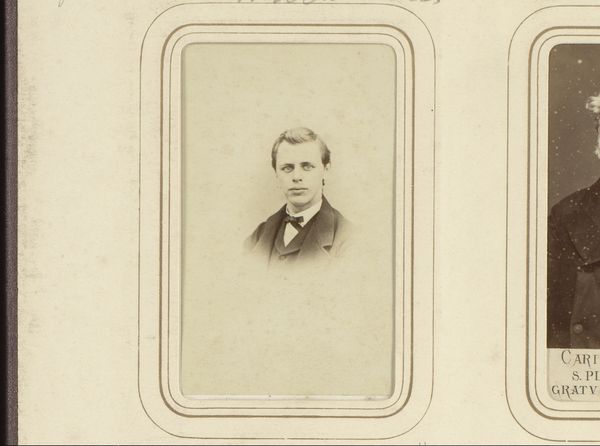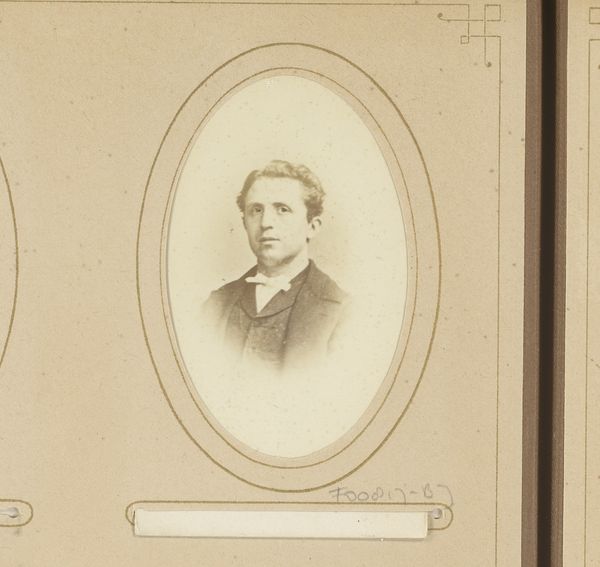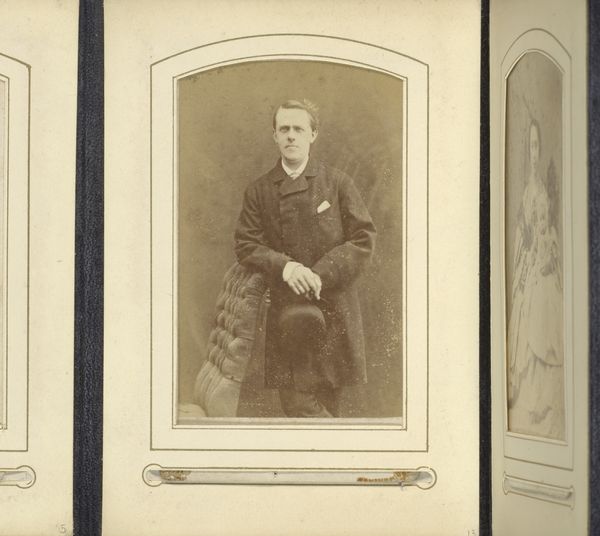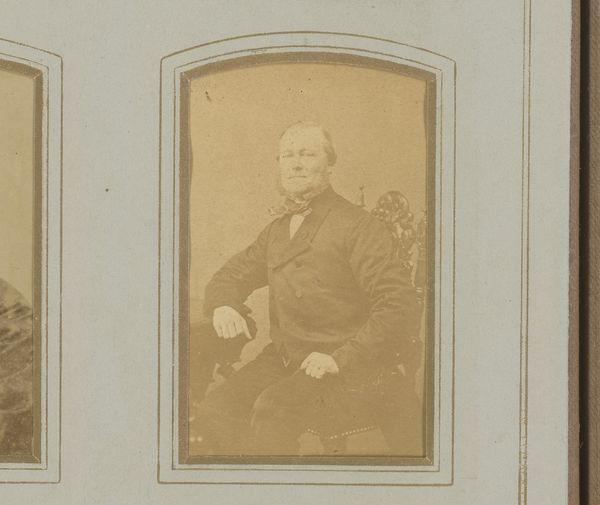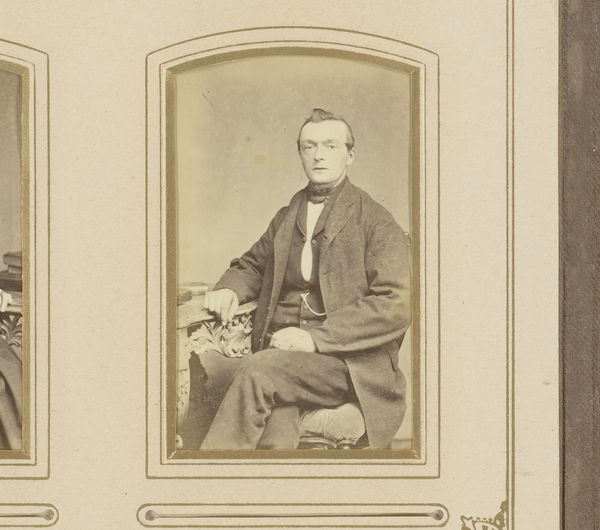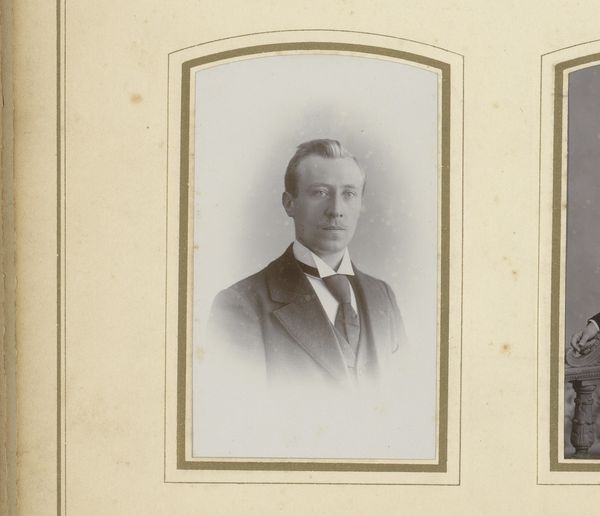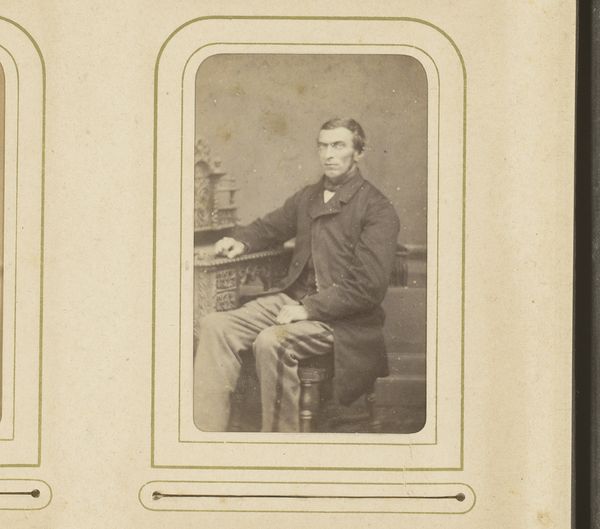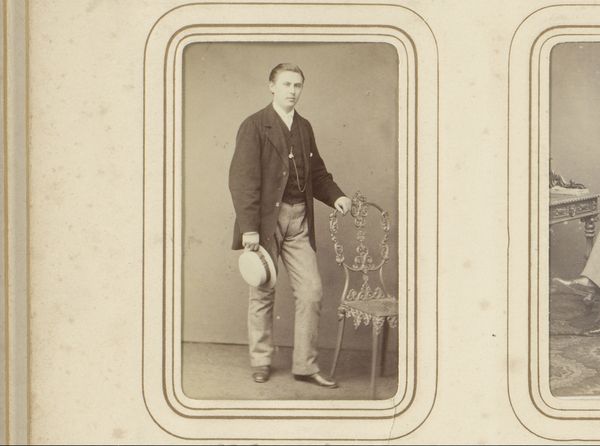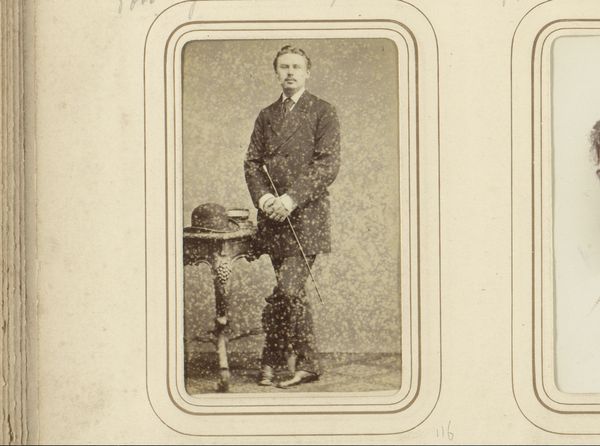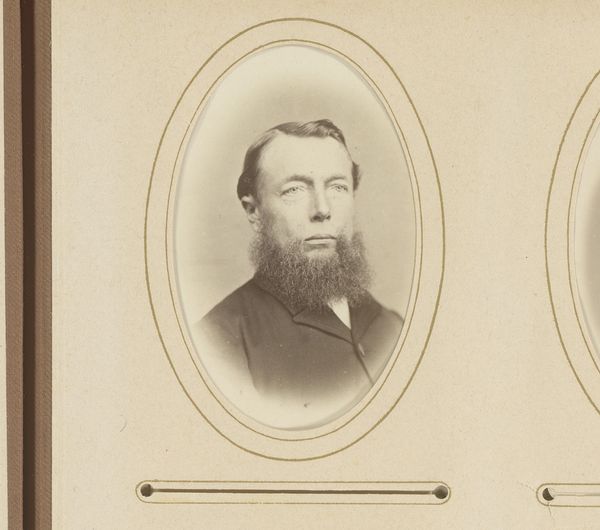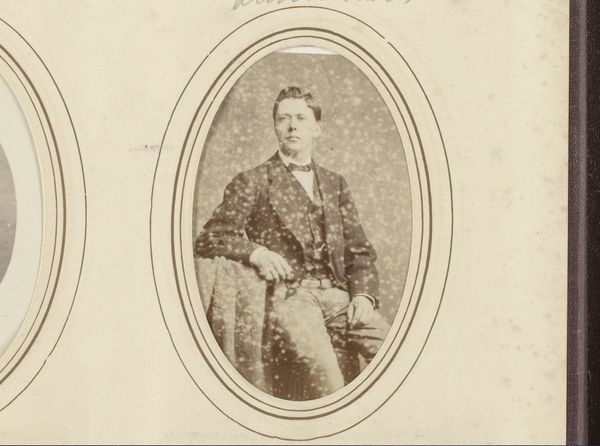
photography, gelatin-silver-print
#
portrait
#
aged paper
#
vintage
#
photo restoration
#
archive photography
#
photography
#
historical photography
#
historical fashion
#
old-timey
#
desaturated image
#
yellow element
#
gelatin-silver-print
#
19th century
#
academic-art
Dimensions: height 82 mm, width 50 mm
Copyright: Rijks Museum: Open Domain
Curator: This is "Portret van een zittende man," a gelatin-silver print likely created between 1866 and 1876. What strikes you immediately? Editor: There's a solemnity to it. He seems confined by the rigid structure of the photo itself, framed so neatly. The limited color palette amplifies the weight of that era, doesn't it? Curator: Indeed. The photographer employs a restricted tonal range, mostly sepia, directing attention to the composition: the subject's posture, the fall of light across his form, the chair, everything precisely placed. Editor: The precision feels deliberate, doesn't it? Consider the sitter’s social position. He’s wearing a suit, carefully posed, indicative of a certain class and its attendant expectations. He presents a curated image of bourgeois masculinity. Curator: Note how his body language contributes to this curated effect. One arm is casually draped along the ornate armrest, contrasting with his stiffly held posture, all contributing to a study in controlled ease. Editor: But what does this control reveal? Perhaps the sitter wants to project a version of himself that confirms social norms, burying potential insecurities. It suggests a complex negotiation of identity, visibility, and power within the framework of the era. The question remains whether we're seeing authenticity or performance. Curator: Intriguing observation. By examining the formal decisions—the choice of backdrop, the fall of light, the tight framing—we unlock not just historical context, but a psychological portrait of the subject within his environment. Editor: Absolutely, seeing beyond mere representation and recognizing it as an ideological statement. The portrait then speaks volumes about class and performative identity of 19th-century Europe. It reminds us that even still photography participates in constructing narrative and influencing historical memory. Curator: A well-taken point, highlighting how technique intertwines inextricably with larger societal dialogues. Editor: It goes to show, the image invites conversation that goes beyond mere aesthetics.
Comments
No comments
Be the first to comment and join the conversation on the ultimate creative platform.
